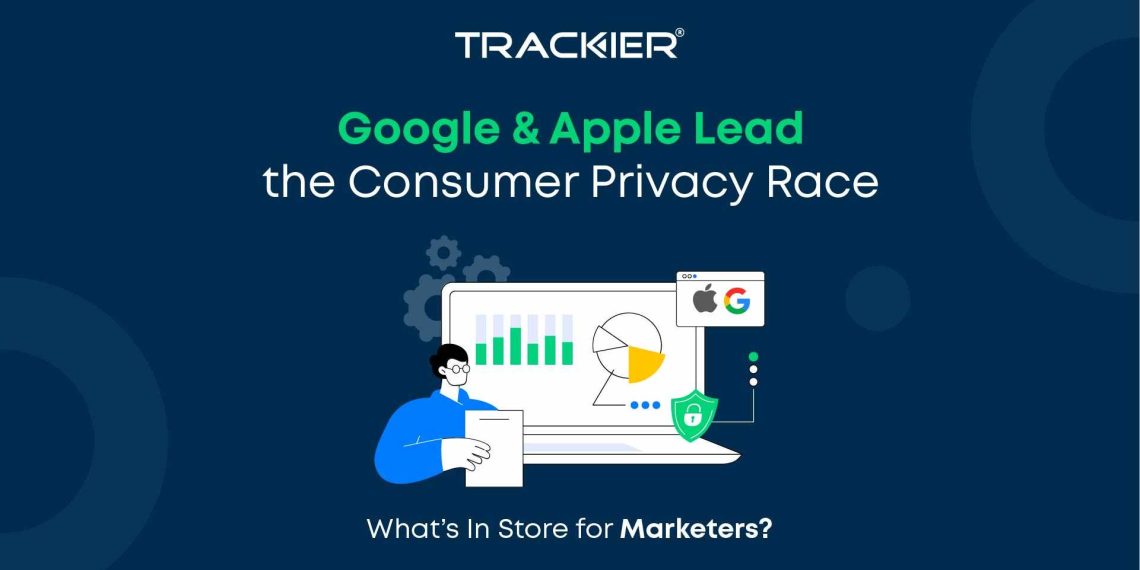In 2021, Cupertino-based smartphone company Apple marked the beginning of the new privacy-centric era with the launch of iOS 15. Following suit, Google came up with the Privacy Sandbox, sending the message loud and clear that user privacy and consumer control of data sharing will be the cornerstone of everything marketing in the coming years.
With the revised data policies, Google and Apple put the power of personal data back in the hands of users. What does this leave the marketers with? A vacuum left by third-party cookies and PII (Personally Identifiable Information)
Is this the death knell for hyper-personalized marketing? Yes and no. It depends on how well marketers adapt to the changes and swiftly move towards cookieless alternatives. Let’s explore how marketing is set to change in 2024 and what marketers can do about it.
Google Sounds The Last Call For Location Sharing in Google Maps
Last month, Google announced that it would be pulling the plug on storing the location data of users. Instead, the data will be stored on the user’s device only for 3 months, cutting the previous window of 18 months short.
As a result, the famous timeline feature of Google Maps will only store the user’s location on their device, giving users complete control over if and when they want to delete their location data from their devices. Alternatively, users can also opt out of location sharing via settings.
Although this default setting is off, and can be turned on manually. Google announced that this location-sharing information will now remain with the user’s device only, even if they have opted into sharing this information.
Apple Follows The Suit
Following in the steps of Google, Apple also announced to update of its privacy policies that include allowing Apple users to keep their information confidential and secure. Furthermore, this information can be shared only if a search order is issued by legal authorities to gain access to Apple IDs and other push notifications.
This, however, is not the first time that Apple has taken the initiative to offer users with better policies. In the past as well it came up with different policies such as policies to control or block cross-app tracking via AppTracking Transparency, and coming up with other tools such as Private Relay which is a VPN-like tool that will encrypt the traffic leaving a user’s device.
Hitting the Kill Switch On Geofence Warrant
User privacy is the cornerstone of marketing in 2024, but that’s not the only goal behind these changes, another reason being Geofence Warrant. In case of any digital/cybercrime, a brand can be issued a geofence warrant to share the user’s details. However, with this new update brands will be free of this responsibility.
Furthermore, in other news, it has been reported that Google has disabled Geofence Warrant to offer users enhanced privacy and data protection. In the recent statement, Google didn’t clearly say or mention anything about its stand on the Geofence warrant and has kept its distance from it.
Irrespective of Google’s stand on it, more and more brands are switching to Geofence warrants to ensure their user’s privacy and from other agencies misusing the user data.
Commenting on the recent steps taken by Google and Apple, Hemant Mann, CTO & Co-Founder of Trackier said, “The immediate impact of Google and Apple’s privacy push feels like a gaping hole in our marketing toolkit. Tracking, targeting, and measurement – the bread and butter for many – are taking a hit. But here’s the thing: this crisis breeds opportunity. Instead of desperately searching for a quick fix, we can see this as a chance to rebuild trust with customers. By shifting our focus from intrusive tracking to genuine connection, we can foster deeper, more personal relationships. It’s a mindset shift. Are we stuck at a roadblock, or are we standing at the starting line of a more sustainable, customer-centric approach?”
The Privacy Curtain Falls: Marketers Face a New Reality
Based on the above-mentioned facts and reports it can be concluded that even the biggest brands are now making a switch towards respecting user’s privacy and their right to keep user data confidential. This signals the pressing need for marketers to start putting privacy at the heart of everything they do – be it targeting, outreach, or even the very products and services they offer. Customers are increasingly seeking out brands that align with their privacy values, so building privacy-centric features and functionalities can be a competitive advantage.
If you’re a brand or an advertiser, it’s imperative that you onboard an attribution tracking solution that is on the same page as you when it comes to data privacy. For example, make sure that your SaaS partner supports SDK and postback tracking to enable cookieless tracking of your performance marketing and mobile marketing campaigns.
Also, your SaaS partner should give you a brief look into your customer’s touch points – channels they’re interacting with, how long they’re interacting with your brand, the lifetime of each customer, etc. to help you make a sense of your customer journey without having to get your hands on personally identifiable information like name, email address, contact number, IP address and more.







